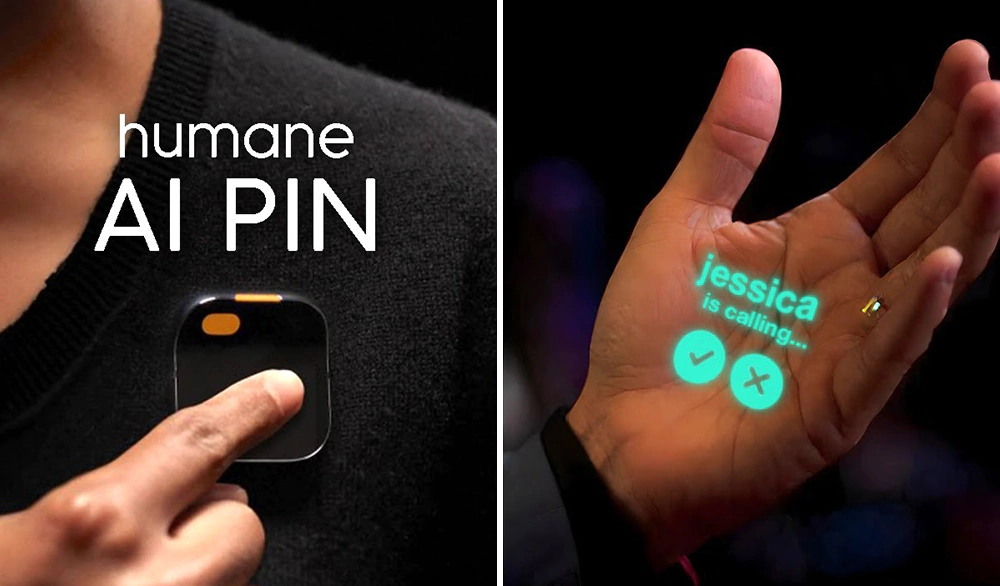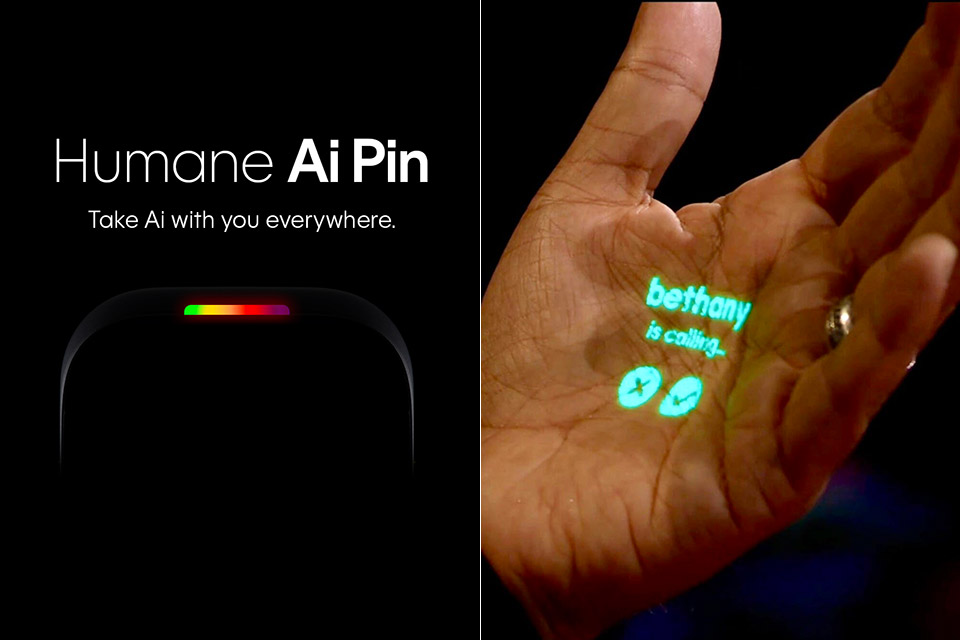The Rise of Humane AI Pin and Screenless Tech
Introduction: A New Chapter in Human-Computer Interaction
For decades, the way we interact with computers has been shaped by screens. From the boxy CRT monitors of the 1980s to the sleek smartphones of today, we’ve always relied on visual displays to bridge the gap between human intention and digital execution. But now, we are on the cusp of a revolutionary shift: the rise of screenless technology. At the heart of this movement is the Humane AI Pin, a small, minimalist device that redefines what personal computing can be—wearable, intelligent, and invisible.
This article explores the Humane AI Pin, the broader trend toward screenless computing, and the profound implications these technologies have for the future of work, communication, privacy, and daily life.
What Is the Humane AI Pin?
The Humane AI Pin, developed by former Apple designers Imran Chaudhri and Bethany Bongiorno, is a wearable AI assistant that clips onto your clothing and replaces the need for a smartphone screen. Instead of staring at a display, you talk to the pin, use gesture controls, or rely on a tiny laser projector that displays basic information on your hand or surroundings.
It is built on the idea of ambient computing—technology that is seamlessly integrated into your environment and daily routines without demanding your full attention. The AI Pin is designed to offer context-aware assistance. That means it knows your schedule, location, preferences, and even your tone of voice, adjusting its behavior accordingly.
The Pin doesn’t just execute commands—it tries to understand intent. Ask it for restaurant recommendations, and it might filter based on your dietary needs or the time of day. Ask it to message a friend, and it can compose the message for you. It's a screenless, voice-first assistant, a natural evolution of virtual assistants like Siri or Alexa.
Why Screenless?
You might wonder: why get rid of screens at all? Screens are convenient and have become second nature to us. But they also come with downsides:
-
Screen Fatigue: Constant screen use can cause eye strain, disrupted sleep, and mental exhaustion.
-
Distraction: Notifications and endless scrolling lead to decreased attention spans and lower productivity.
-
Inaccessibility: Screens aren’t always usable for people with visual impairments or certain physical disabilities.
-
Social Disconnection: Smartphones often pull people away from the real world—even during social gatherings.
By removing the screen, Humane and other innovators hope to foster healthier, more present interactions with technology—where you engage with your surroundings, not with a piece of glass.
The Philosophy Behind Humane
Humane’s founders were not trying to make just another gadget. Their mission is deeply rooted in the belief that technology should serve humanity, not dominate it. According to them, we’ve reached a point where tech is omnipresent—but not always helpful or ethical.
Key principles behind the AI Pin and screenless tech include:
-
Trust and Privacy: The AI Pin is designed to process data locally when possible, keeping sensitive information off remote servers.
-
Control and Transparency: You know when it's listening, when it's active, and when it’s off. There’s a visible indicator (called the "Trust Light") that turns on whenever the microphone or sensors are active.
-
Minimalism: Instead of dozens of apps and endless options, it aims to streamline your digital life, surfacing only what you need at the right time.
How It Works: Technology Inside the Pin
The AI Pin includes multiple cutting-edge technologies packed inwto a tiny form:
-
Custom OS ("Cosmos"): A new operating system built from scratch to work without screens.
-
Laser Ink Display: Projects a simple, high-contrast display onto your palm or surface.
-
Voice Interface: Natural language understanding lets you talk to it like a human.
-
Gesture Recognition: Control actions using finger pinches or swipes in the air.
-
Camera and Sensors: Detects context (e.g., whether you're walking, talking, looking at something) to adjust responses.
-
AI Models: Leverages on-device and cloud-based AI for tasks like summarizing emails, translating speech, or managing your calendar.
This multi-sensory interface is what allows the Humane Pin to feel natural. It mimics human communication—speech, gestures, eye contact—rather than touchscreens or buttons.
Benefits of Screenless Technology
1. Digital Wellness
Without addictive visual content, users are less likely to spend hours scrolling mindlessly. This helps improve mental health, sleep, and focus.
2. Accessibility
Screenless interfaces make technology more usable for people who can't see or manipulate a touchscreen easily.
3. Hands-Free Efficiency
Whether you’re cooking, driving, or walking, having a voice- and gesture-enabled assistant improves multitasking.
4. More Natural Communication
Speaking to a device and having it respond like a person aligns more closely with how humans interact.
5. Environmental Awareness
You’re no longer heads-down staring at a screen—you’re looking at the world around you, creating opportunities for richer real-world experiences.
Challenges and Criticisms
Despite its promise, the Humane AI Pin—and screenless tech in general—is not without criticism.
1. Privacy Concerns
Even with trust lights and transparency features, wearable microphones and cameras can make people uneasy. There’s potential for misuse or hacking, especially if data is stored remotely.
2. Voice Interface Limitations
Voice input doesn’t work well in noisy environments or for private queries in public. It also assumes users are comfortable speaking out loud, which isn’t always true.
3. Learning Curve
Moving from screen-based interaction to voice/gesture takes time and effort. Not everyone is ready to abandon the smartphone entirely.
4. Battery Life and Heat
With so much processing in a small form, battery drain and overheating are major technical challenges.
Other Players in the Screenless Space
Humane isn’t alone. A growing number of startups and tech giants are betting on screenless futures:
-
Rewind.ai Pendant: A necklace-like wearable that records and recalls your spoken interactions and notes.
-
Meta’s Smart Glasses (Ray-Ban): Offer voice assistants and camera functionality with no display.
-
Rabbit R1: A handheld AI assistant built around a Large Action Model (LAM) that executes tasks for you.
-
Alexa Everywhere: Amazon’s voice-first vision puts Alexa in cars, fridges, and wearables—no screen needed.
-
Neural Interfaces (like Neuralink): Long-term, these aim to bypass screens entirely by interfacing directly with the brain.
Each of these companies shares a vision: technology that is invisible, intuitive, and seamlessly embedded into your life.
Use Cases: Where Screenless Tech Wins
-
Driving: You don’t need to look away from the road. Ask your pin for directions, weather, or messages.
-
Fitness: Track performance, set timers, and receive motivational updates without carrying a bulky phone.
-
Healthcare: Provide real-time, contextual information to caregivers or doctors in the field.
-
Education: Students can ask for definitions, translations, or examples hands-free.
-
Remote Work: Summarize meetings, manage calendars, and automate workflows without alt-tabbing through screens.
Ethical Design and AI
As AI becomes more powerful, questions around ethics, consent, and surveillance are front and center. Humane positions itself as a company that cares deeply about ethical design:
-
No hidden data collection.
-
No manipulative attention-grabbing tactics.
-
Emphasis on user consent and human-centric values.
Still, the balance between helpful AI and intrusive monitoring is delicate. Even well-intentioned companies must be held accountable by users, regulators, and society.
The Future of Screenless Tech
We’re likely just at the beginning. Imagine:
-
Homes where lights, music, temperature, and devices respond to natural language without a single screen.
-
Clothing embedded with AI that monitors health and stress.
-
AI agents that understand your behavior deeply enough to act as true digital twins—handling tasks, conversations, and decisions on your behalf.
Screenless tech isn’t about replacing smartphones overnight—it’s about redefining our relationship with computing. Moving from tools we look at to companions we live with.
Conclusion: Living Beyond the Screen
The Humane AI Pin represents more than just a gadget. It’s a philosophical leap toward a future where technology is quieter, kinder, and more humane. While challenges remain—technical, ethical, and social—the momentum behind screenless tech is real.
If the 2010s were the decade of smartphone domination, the 2020s may be the decade we reclaim our attention, reduce our screen time, and rediscover life—face to face, hands-free, and fully present.
As AI evolves, the goal should not be more attention or more screen time. The goal should be more life. And that is the promise of the screenless revolution.



